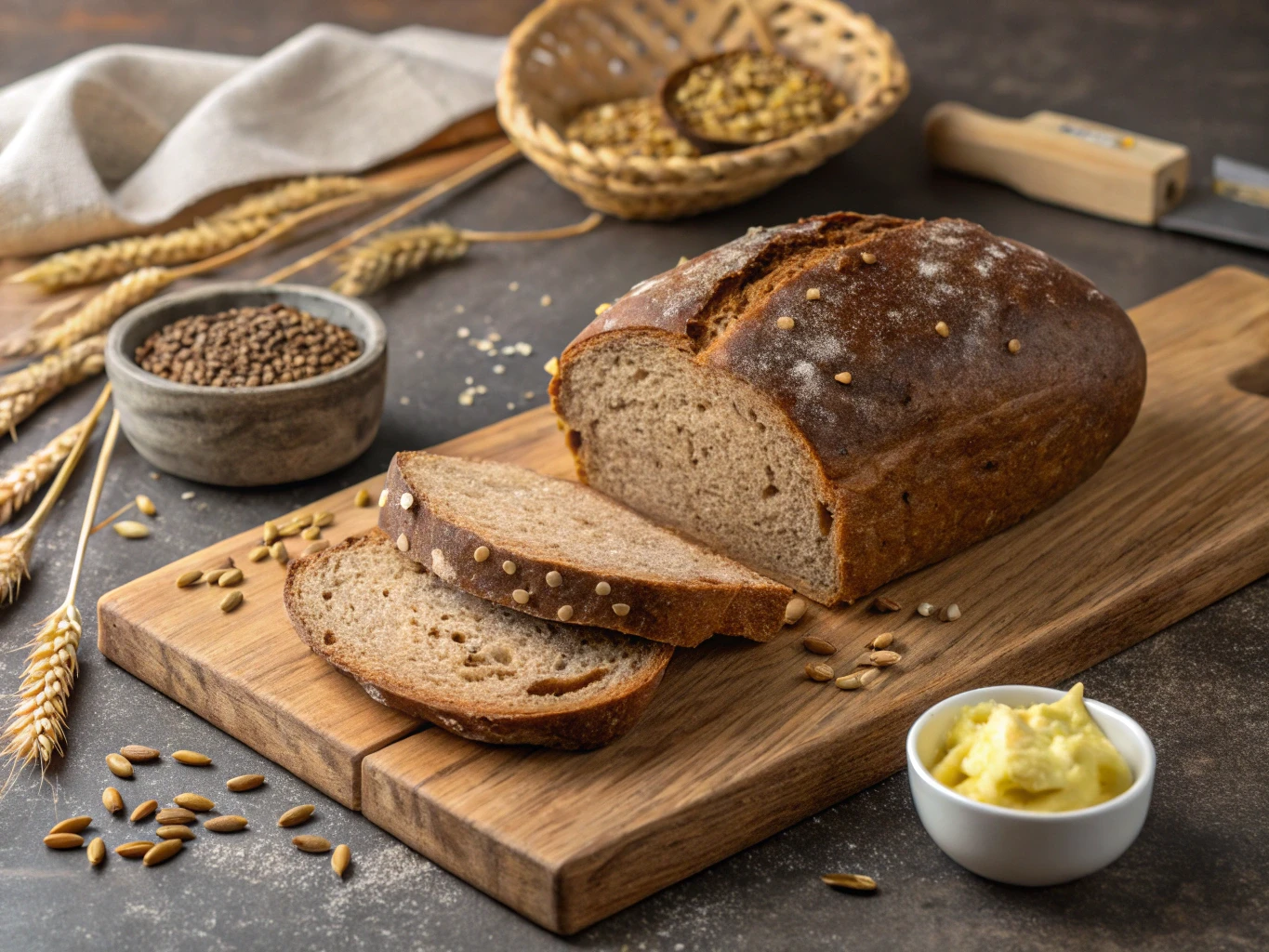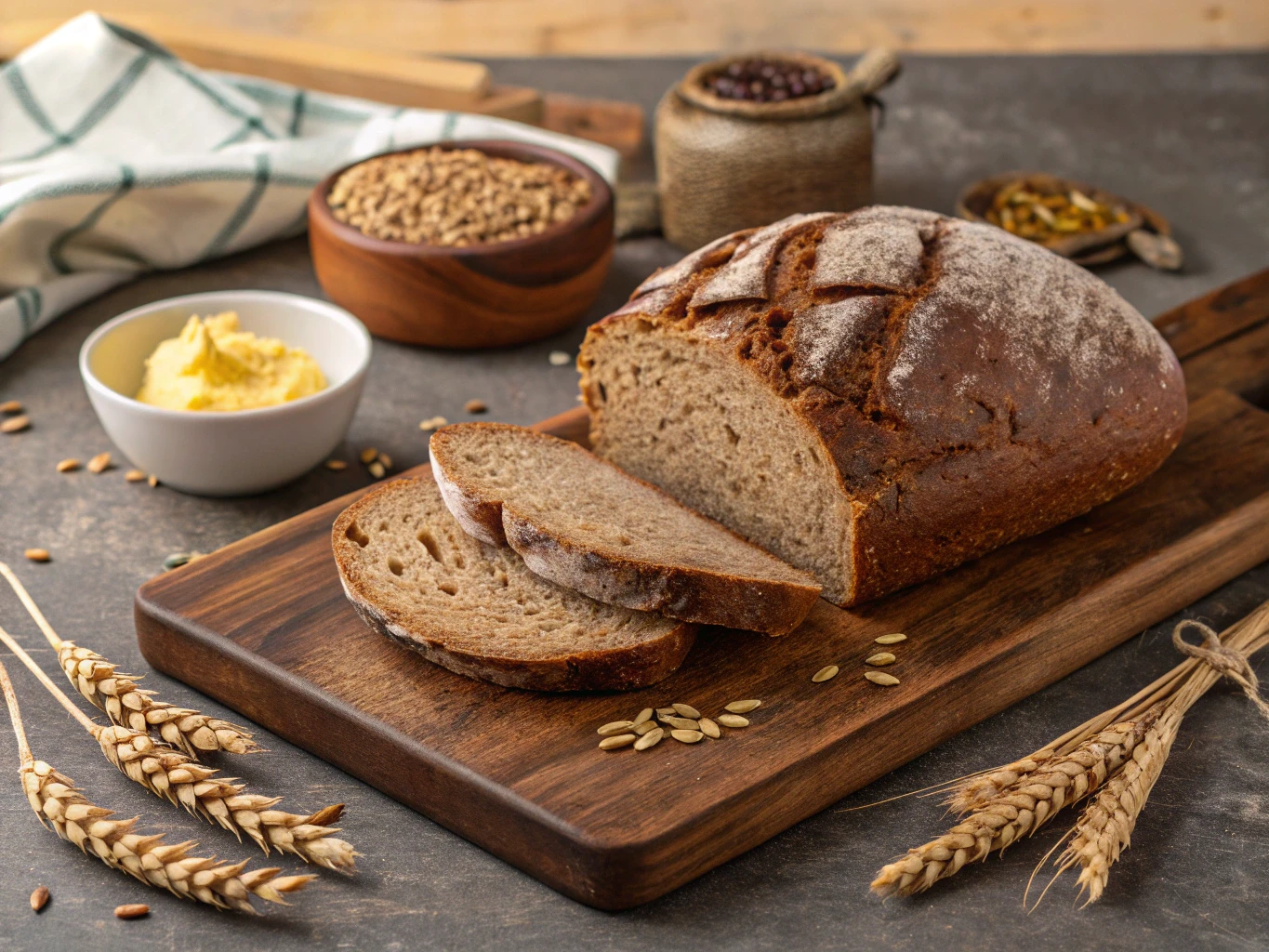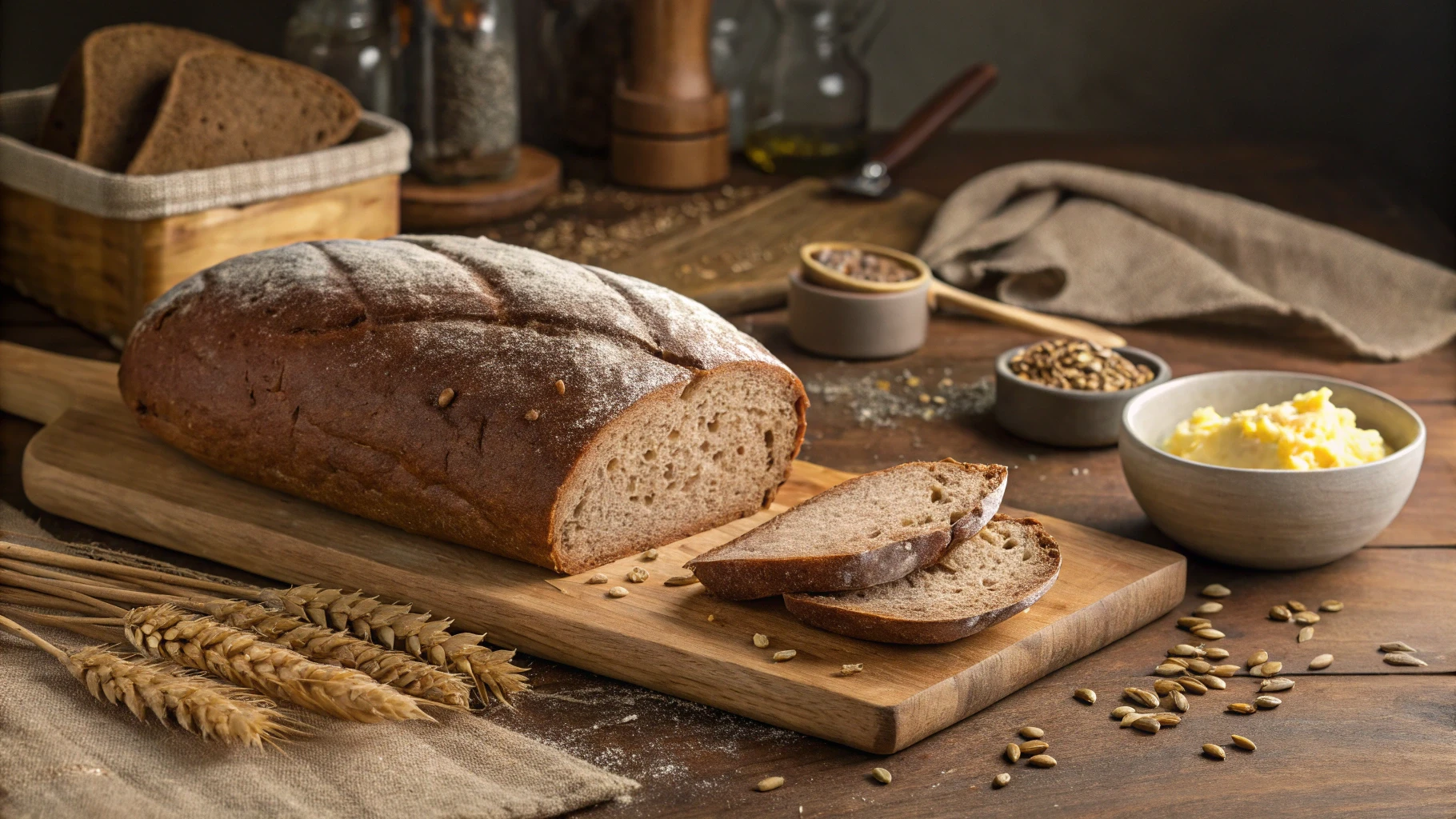That first bite of genuine German bread transports you instantly—the satisfying crackle of a rustic crust giving way to reveal a tender, aromatic interior that simply cannot be replicated by mass-produced alternatives. For countless generations, this distinctive craft has defined German culinary identity, with each region guarding its unique recipes like precious heirlooms.
- Bist Amazon Picks:
Having spent countless hours beside my grandmother as she transformed humble ingredients into soul-nourishing loaves, I’ve developed a profound appreciation for this centuries-old craft. The distinctive tang of authentic German BROT isn’t merely sustenance—it represents cultural heritage in edible form, connecting past and present through taste and texture. Today, I’m unveiling the closely guarded secrets that will transform your kitchen into a traditional German bakery, allowing you to experience the incomparable satisfaction of creating genuine BROT in your own home.
The Rich History and Cultural Significance of German Bread (BROT)
Few culinary traditions boast the diversity found in German bread-making. With over 300 officially recognized varieties spanning every region, German BROT represents perhaps the world’s most varied bread culture. This incredible diversity earned German bread-making traditions UNESCO recognition as Intangible Cultural Heritage in 2014—a testament to the craft’s significance.
This abundance reflects centuries of regional specialization. Northern German bakers traditionally favor hearty rye loaves like Schwarzbrot and Pumpernickel, developed to withstand harsh coastal climates and provide sustaining nourishment. Meanwhile, southern regions like Bavaria showcase wheat-based creations like Brezen (pretzels) and Semmeln (rolls).
What truly separates authentic German BROT from commercial alternatives? The difference lies in fermentation techniques, ingredient quality, and uncompromising craftsmanship. While industrial bread focuses on speed and consistency, traditional German baking prioritizes flavor development, nutritional value, and connecting consumers to agricultural rhythms. The result? Bread with unmistakable character and substance that has sustained communities for generations.
Essential Ingredients for Authentic German Bread (BROT)
Understanding German Flours
Creating genuine German bread begins with understanding the unique flour classification system. Rather than protein content, German flours are categorized by ash content (mineral residue after burning), which indicates how much bran and germ remain. Type 405 corresponds roughly to American all-purpose flour, while higher numbers indicate progressively more whole-grain content.
Rye flour fundamentally shapes authentic German bread character. Its distinctive properties create that characteristic moist, dense crumb and extended shelf life. However, working with rye presents unique challenges—it contains different proteins than wheat, forming pentosans rather than gluten networks. This explains why proper sourdough fermentation becomes non-negotiable for successful rye-based BROT.
For your home baking adventures, experiment with flour blends before tackling traditional recipes. Try combinations of bread flour with gradually increasing percentages of rye, spelt, or emmer to develop your skills with these distinctive grains.
The Magic of Sourdough Starters
No element proves more essential to authentic German BROT than properly maintained sourdough culture. Unlike commercial yeast, which offers convenience at the expense of flavor complexity, sourdough creates the signature tang while naturally extending shelf life through beneficial acid production.
Creating your own starter requires nothing more than flour, water, and patience. Begin by combining equal weights of rye flour and room-temperature water in a clean jar. Leave uncovered for 24 hours, then discard half and refresh with equal parts flour and water. Repeat this process daily until consistently bubbling with a pleasantly tangy aroma—typically 5-7 days.
Maintenance requires regular feeding schedules—once established, your starter will thrive with weekly refreshments if refrigerated. Bring to room temperature 12 hours before baking for optimal results. Think of your starter as a living kitchen companion, developing increasingly complex flavors with proper care.
Additional Key Ingredients
| Ingredient | Role in German Bread | Recommended Types |
|---|---|---|
| Salt | Enhances flavor, controls fermentation | Unrefined sea salt (1.8-2% of flour weight) |
| Seeds | Adds texture and nutrition | Organic sunflower, pumpkin, flax |
| Spices | Regional flavor variations | Freshly ground caraway, coriander, anise |
| Water | Hydration and texture | Filtered, room temperature (avoid chlorinated) |
Essential Techniques for Perfect German Bread (BROT)

Mastering German bread requires understanding fundamental techniques that distinguish these loaves from other traditions. Unlike highly kneaded French or Italian breads, traditional German doughs—particularly those containing significant rye percentages—benefit from gentler handling.
For rye-dominant doughs, forget aggressive kneading in favor of the “fold and stretch” technique. After initial mixing, allow your dough to rest 20 minutes before folding each edge toward the center. This develops structure without overworking the delicate dough. Repeat this process several times during initial fermentation.
Proper fermentation remains perhaps the most crucial element. German BROT traditionally undergoes extended development—often 12-24 hours—allowing complex flavors to emerge while naturally improving digestibility. Your patience will be rewarded with distinctive character impossible to achieve through commercial shortcuts.
Common pitfalls for beginners include insufficient fermentation (resulting in dense, gummy interiors) and improper hydration management. Rye absorbs significantly more water than wheat, requiring careful adjustment based on your specific flour blend. Begin with trusted recipes before experimenting with hydration levels.
Classic German Sourdough Rye Bread (Roggenbrot) Recipe
Ingredients
| For the Pre-Ferment | Quantity | For the Main Dough | Quantity |
|---|---|---|---|
| Active sourdough starter | 150g | Bread flour | 300g |
| Rye flour | 150g | Rye flour | 450g |
| Water | 300ml | Water | 350ml |
| Salt | 18g | ||
| Caraway seeds (optional) | 10g |
Preparation Method
Day 1: Prepare the Pre-Ferment
- Combine active starter, rye flour, and water in a large bowl
- Mix until completely incorporated with no dry spots
- Cover with a damp cloth and rest at room temperature (65-70°F) for 12-16 hours
- The mixture should appear bubbly and smell pleasantly tangy when ready
Day 2: Mix the Main Dough
- Add pre-ferment to a large mixing bowl with remaining ingredients
- Mix thoroughly until well-combined—the dough will feel sticky but cohesive
- Cover and rest 30 minutes before performing the first fold
- Complete four gentle folds at 30-minute intervals
- Allow to ferment until increased in volume by approximately 50%
Shaping and Proofing
- Turn dough onto lightly floured surface
- Shape into a round boule or oval batard with minimal handling
- Place into well-floured proofing basket, seam-side up
- Cover with damp cloth and proof at room temperature 1-2 hours until gently expanded
Baking Process
- Preheat oven with Dutch oven inside to 450°F (230°C)
- Carefully turn dough into preheated Dutch oven
- Score top with sharp blade in crosshatch pattern
- Cover and bake 30 minutes with lid on
- Remove lid and continue baking 15-20 minutes until deeply browned
- Internal temperature should reach 205°F (96°C)
- Cool completely (minimum 2 hours) before slicing
Serving and Storing Your Homemade German Bread (BROT)

Traditional German bread reveals its true character when properly paired. Unlike commercial sandwich bread, authentic BROT shines with simple accompaniments that complement rather than mask its distinctive flavor profile. For breakfast, enjoy with cultured butter and high-quality preserves. For the quintessential German experience, pair with quality cold cuts, aged cheeses, and perhaps a smear of mustard.
Proper storage proves crucial for maintaining freshness without preservatives. Store your finished loaves cut-side down on a wooden board covered with a clean kitchen towel for the first day. For longer storage, wrap in beeswax cloths or paper bags—avoid plastic, which traps moisture and accelerates staling. Many traditional German households utilize specialized ceramic bread boxes designed to maintain optimal humidity levels.
For extended preservation, slice completely cooled bread and freeze in a sealed container. Revive frozen slices by toasting directly from frozen—this restores the crust’s satisfying crackle while maintaining interior moisture.
Troubleshooting Your German Bread (BROT) Baking Process
Even experienced bakers encounter occasional challenges when crafting authentic German bread. Understanding common issues helps you diagnose and remedy problems efficiently:
| Problem | Possible Cause | Solution |
|---|---|---|
| Dense, gummy interior | Insufficient fermentation | Extend fermentation time, verify starter activity |
| Crust too thick or hard | Excessive oven temperature | Reduce temperature by 25°F, adjust baking time |
| Bread spreads rather than rises | Dough too hydrated | Reduce water content by 5-10% in next batch |
| Sour flavor overwhelming | Extended fermentation at warm temperatures | Reduce fermentation time or temperature |
| Mold developing quickly | Insufficient acidity | Ensure proper sourdough development, consider longer fermentation |
Frequently Asked Questions About German Bread (BROT)
What makes German bread (BROT) different from other European breads? German bread distinguishes itself through higher rye content, extended fermentation periods, and remarkable diversity. Unlike French or Italian traditions that favor wheat and often prioritize open crumb structures, German BROT embraces densely nutritious loaves with substantial crusts and pronounced flavor complexity.
Can I make authentic German bread (BROT) without rye flour? While some southern German varieties utilize primarily wheat flour, most authentic German breads incorporate at least some percentage of rye. This distinctive grain contributes significantly to the characteristic flavor profile and keeping qualities. Begin with smaller percentages (20-30%) if you’re new to working with rye before advancing to higher-percentage varieties.
Why is my German bread (BROT) so dense compared to store-bought bread? Authentic German bread naturally possesses greater density than commercial alternatives. This represents a feature, not a flaw! The substantial texture holds up beautifully to traditional toppings while providing sustained energy through complex carbohydrates. That said, excessive density may indicate insufficient fermentation or improper dough handling.
How long does homemade German bread (BROT) stay fresh? Properly fermented German bread typically maintains optimal eating quality for 3-5 days when stored correctly. Higher rye content often translates to extended freshness, with some traditional varieties like Pumpernickel remaining excellent for a week or longer. This natural preservation stems from beneficial acids produced during sourdough fermentation.
Embracing the German Bread (BROT) Tradition
Creating authentic German bread connects you to centuries of tradition while providing unparalleled flavor and nutrition. Though mastering these techniques requires practice and patience, the reward of pulling your first perfect loaf from the oven makes every step worthwhile.
Remember that each attempt brings you closer to mastery—German bread baking represents as much journey as destination. Embrace the process, observe your dough’s subtle cues, and discover how small adjustments profoundly impact your results. Share your creations with family and friends to continue the communal tradition that has sustained German culture for generations.
Ready to embark on your German bread adventure? Begin with the classic Roggenbrot recipe provided above, then gradually explore regional variations as your confidence grows. Your kitchen will soon fill with the incomparable aroma of authentic BROT—a testament to the timeless craft of German bread baking now thriving in your own home.
Have you tried baking German bread before? Share your experiences or questions in the comments below! And if you’re proud of your homemade BROT creations, tag us on social media using #AuthenticGermanBROT—we’d love to see your results!

